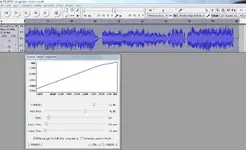A
athrun200
New member
I have just learnt some of the stages of recording: 1. Tracking, 2. Mixing and 3. Mastering
I am now trying to do mixing but I have no idea what to do. I added the reverb effect, and then turned the EQ such that some of the high frequency are filtered out(The high frequency would produce an irritating harmonica sound, that's why I want to filter it out) and used a compressor. What else can I do?
I have several questions now.
1. Would the sequence of added effects affects the result. For example, if I add reverb before EQ, would the result be the same if I do EQ before reverb?
2. How to use compressor? I just used the default setting. And after adding compressor, there is a red line on the track, anyone knows what does that mean?
3. After adding the compressor, it seems the volume of the track is increased a little bit, shouldn't it be reduced to minimize the volume difference?
The mp3 recording is just some random stuffs played by me to test out my newly bought SM58 and scarlett 2i2.
I am now trying to do mixing but I have no idea what to do. I added the reverb effect, and then turned the EQ such that some of the high frequency are filtered out(The high frequency would produce an irritating harmonica sound, that's why I want to filter it out) and used a compressor. What else can I do?
I have several questions now.
1. Would the sequence of added effects affects the result. For example, if I add reverb before EQ, would the result be the same if I do EQ before reverb?
2. How to use compressor? I just used the default setting. And after adding compressor, there is a red line on the track, anyone knows what does that mean?
3. After adding the compressor, it seems the volume of the track is increased a little bit, shouldn't it be reduced to minimize the volume difference?
The mp3 recording is just some random stuffs played by me to test out my newly bought SM58 and scarlett 2i2.

